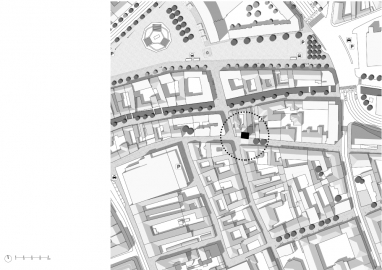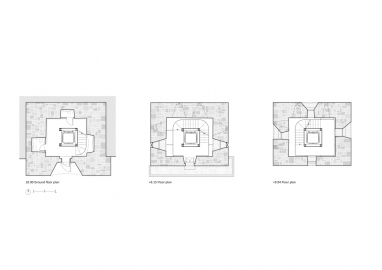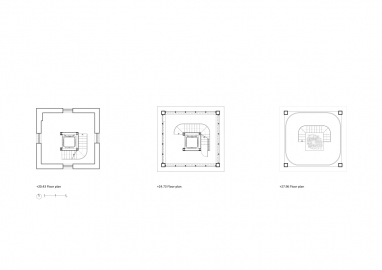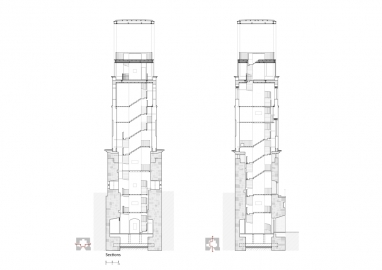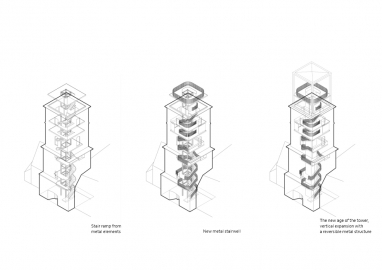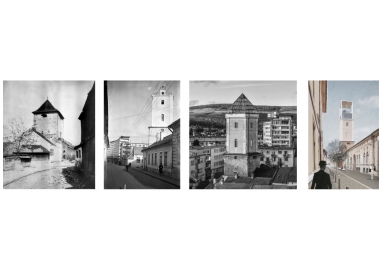Firefighters’ Tower
Among the visible landmarks of the city, the Firefighters’ Tower stands out for its mixture of styles, from Medieval stonework to Baroque detailing and contemporary interventions. Left derelict in recent years, the new intervention aims to restore the tower’s position as a repository of local history and an attractive space for the general public.
Built in the 15th century, the Firefighters Tower was part of the second medieval precinct of the city. In the early 1870s the old medieval tower was raised with a new segment, becoming a firehouse for the surveillance of fires in the surrounding area. In 1960 a project was developed to restore the building, which meanwhile became a historical monument of national importance. The restoration was done in the paradigm of those times, introducing reinforced concrete floors and ramps inside, in strong contradiction with the heritage structure of the tower. In 1985 the tower was transformed into a astronomical museum, receiving a glass pyramid at its top, which replaced the old picket of the firehouse. Over time, the function of the astronomy museum was lost and the tower space was transformed into a firefighters museum, but without much success among the public.
The tower, built in successive layers remains an urban observatory through the new age, a place of contemplation and reading of urban development. The third age is materialized through a discrete, integrated and unitary intervention, which aims, by simple and reversible means, to obtain a consistent activation of the tower, while also providing a reading on the past and future city. After the removal of all reinforced concrete elements, the new core becomes the backbone of the tower, which facilitates accessibility to the upper level, allows visiting the interior space and gives structural rigidity. Proposed as a semi-transparent veil, the core thus becomes part of the tower's third age, which reveals the other phases and stages of its evolution. The tower visiting experience starts from the contemplation of the city as a whole, captured in the reality of our days, from the highest point, imagined as a living diorama, without limits, with only a discreet outline. The model of the fortified medieval city proposed at this level thus becomes the only element frozen in time, which is always mirrored, keeping the tower’s historic moment of beginning in the collective mind.
All the new elements are proposed to be made of metal elements, which are detached from the inner and outer shell of the tower, generating a certain semi-transparency for reading the first two ages of the tower. The rest of the heritage elements of the tower have been restored according to the principles specific to historical monuments, conjuring the medieval age of the tower through traditional techniques (with the stonework left visible) and the baroque age evoked by finely polished plasters. The proposal consists of the total removal of all concrete elements and the compartmentalization or filling of existing voids and niches. Inside, the plaster applied to the stone masonry of the medieval segment of the tower will be removed, preserving the apparent masonry. The guard road will be reactivated, by providing access to it and by proposing a discreet and semi-transparent railing, in accordance with the formal and material expression of the proposed third age. All elements of external carpentry, plastering and cladding will be refurbished or replaced with identical elements, which retain materials, textures and production techniques similar to the original ones.

 © Cosmin Dragomir
© Cosmin Dragomir
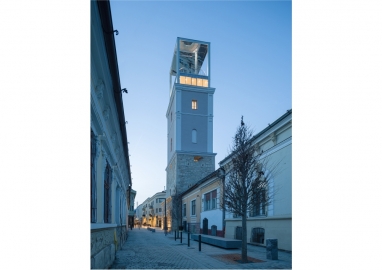 © Cosmin Dragomir
© Cosmin Dragomir
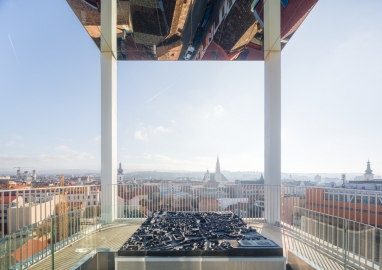 © Cosmin Dragomir
© Cosmin Dragomir
 © Cosmin Dragomir
© Cosmin Dragomir
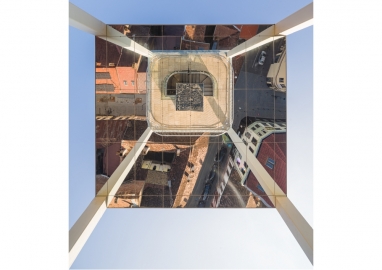 © Cosmin Dragomir
© Cosmin Dragomir
